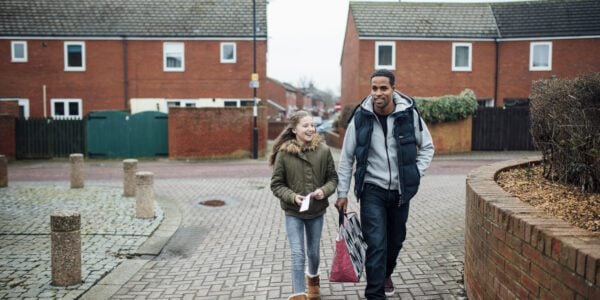
12/11/21
3 min read
Consumers are likely to draw down extra savings accumulated during the pandemic slowly rather than quickly.
Could the savings accumulated by households over the last 18 months or so lead to a temporary consumption boom? The question matters for understanding what might happen to economic growth in the short term and, given supply-side constraints, for the path of inflation.
While the household saving rate typically rises during recessions, its peak at 23% of household income in the second quarter of 2020 was far higher than what was seen in previous downturns. However, new analysis, funded by the Nuffield Foundation, uses both aggregate and household-level data to argue a short-term consumption boom is unlikely to result.
Three facts suggest that savings built up during the pandemic are more likely to be drawn down slowly rather than quickly:
- Falls in spending during this recession were primarily in purchases of services rather than durable goods. Purchases of services such as meals out and holidays are less likely to increase much next year because less was spent on them last year. This contrasts to durables purchases, which are more likely to be postponed rather than cancelled.
- Purchases of services fell by 30% relative to pre-recession levels, compared with a decline of just 4% at the equivalent point following the 2008 financial crisis. Purchases of durables had already exceeded their pre-recession levels by the second quarter of 2021, despite the fact that output had yet to recover to its pre-recession level by this time.
- Increases in net wealth over the pandemic were more common among higher-income households, who were less likely to experience economic uncertainty and income losses during the pandemic, and so are less likely to change their spending behaviour as the economy recovers.
- A quarter of those in the top pre-pandemic income decile reported a 10% or greater increase in their net wealth, compared with just one in twenty of those in the bottom decile.
- At the same time, one in six of those in the bottom pre-pandemic income decile reported a 10% or greater decline in net wealth compared with one in ten of those in the top pre-pandemic income decile.
- Survey questions on how individuals would respond to a hypothetical payment of £500 suggest low desire to spend more as incomes increase. Responses from March 2021 suggest that, on average, only £55 of the value of these payments would be spent over the next three months, suggesting the appetite to spend out of income growth is not unusually high. Richer households are more likely than poorer households to report they would use the extra funds to add to their savings. Poorer households are more likely than richer households to report they would use them to reduce their debts.
Consumption growth in the next few months is still likely to be rapid, and to be accompanied by additional inflation. This would be expected as demand and household saving return to pre-pandemic levels and firms have to adjust to new spending patterns. However, the fact that additional savings accumulated during the pandemic are likely to be drawn down slowly limits the degree to which consumer spending will drive both the recovery and inflation in future.
Peter Levell, Associate Director at IFS and the author of the report, said: “Survey evidence on which consumers accumulated savings, and on individuals’ desire to spend out of income gains, both suggest consumers will draw down the extra savings they built up over the pandemic slowly rather than quickly.”
Mark Franks, Director of Welfare at the Nuffield Foundation said: “While the immediate recovery from the pandemic-induced recession has been faster than many expected, supply limitations in combination with a reluctance on the part of households to quickly draw down their savings will limit the extent of consumer-led growth. It is also of concern that the poorest households are the most likely to have seen a large proportionate drop in their overall wealth, especially given the high levels of household poverty that already existed before the pandemic.”

















































